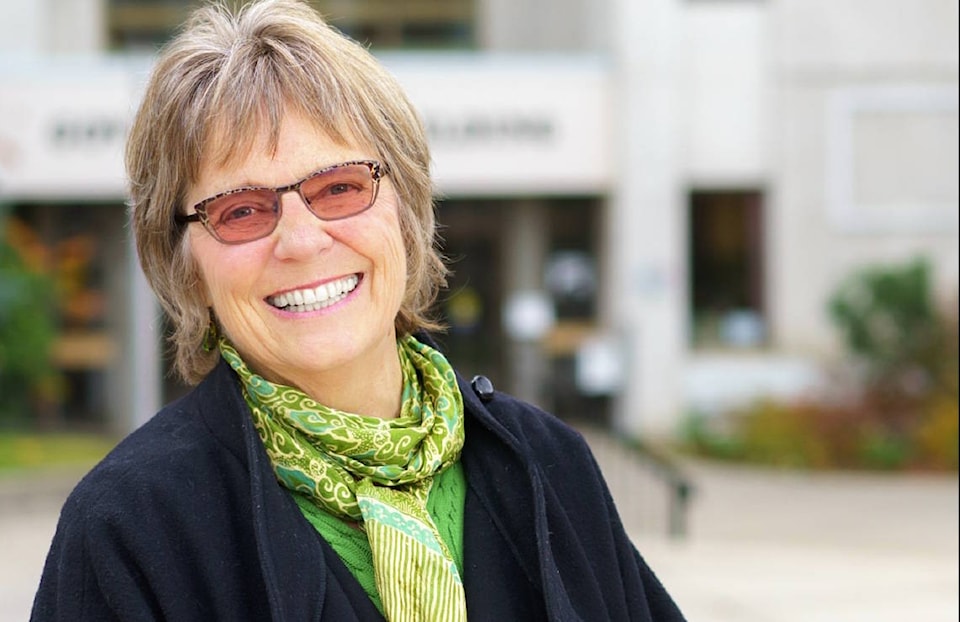Kelowna is kind of like Toronto. They’re both cities that people love to hate. I can’t count the number of times I’ve heard opposition to proposed developments framed as: “Ugh, no, we don’t want to look like Kelowna.”
I feel a little loyalty to that city, as I spent my high school years there and they were good ones. Of course, that was a very different Kelowna — about 20,000 people compared to today’s 127,000.
After high school, I continued visiting my parents in Kelowna, and watched as it grew, spread and sprawled. It wasn’t pretty, especially along the highway strip. The pace of development shocked me, coming from quiet little Nelson.
This fall I spent seven weeks in Kelowna. What I saw reaffirmed to me that smart local governments can take a not-very-functional city and put it on the path to beauty and sustainability. Vision, planning and a strong heart is all it takes.
Not to say Kelowna’s perfect. Despite an impressive transit system, the city hasn’t managed to curb the car addiction. Traffic is heavy and many drivers are aggressive. We saw some maneuvers worthy of stunt drivers.
The wonderful bike-riding turned me green with envy. The city has added bike lanes and traffic calming measures to make biking pleasant and relatively safe. All ages and sizes were pedalling, as well as walking, including me.
The rate of construction is still stunning. Every other Tuesday, council meets to consider pages of development permits, variances, rezones and other land use questions. Some tall, high-price condos are underway near downtown, and other more modest ones are scattered around. Densification in action.
Also in the downtown, especially at night, homeless folks congregate on certain corners and vacant sites. As we explored parks, we saw telltale signs of people living rough and camping. Poverty, fentanyl deaths, mental health and addictions, and lack of low-cost housing plague Kelowna just like many other places, including Nelson.
We were fascinated by the extensive development happening in the mountains surrounding Kelowna. New roads and housing perched on the sides and tops of the hills. Luckily Kelowna doesn’t get a lot of rain, but I hope the developers planned for increasingly intense storm events.
The good news is that agricultural land is being saved (for the most part), and development is pushed up into non-arable areas. I am ever grateful to the NDP government that established the agricultural land reserve in the 1970s.
On the topic of land, it was encouraging to visit numerous wetlands and marshes that have been protected within the city. We’d also run across stretches of fenced-in, protected stream channels in the midst of dense development. Such areas are important for water management.
In my September column, I mentioned the Netherlands’ approach of giving rivers room by moving structures back so natural flooding can occur. Kelowna has a wonderful greenway that follows Mission Creek. The lower half is built on top of old dykes. We saw one area where they had moved the dykes back so the creek could spread and percolate and not go rushing into someone’s home. Given this year’s flooding in Kelowna, I suspect even more attention will be paid to this.
The waterfront is a big feature of Kelowna. In the new developments north of downtown, the city ensured lovely public spaces were built, including a waterfront pathway. South of downtown, gorgeous older homes line the shore, many with retaining walls, docks and other structures that block the shoreline and limit public access. The builders didn’t know, or disregarded, the fact that land below high water mark belongs to the public (the Crown). This is a tough situation to rectify, but many structures were destroyed in the spring flooding and some people say it’s a good time to start.
Like Nelson, Kelowna has invested in its cultural scene, both inside (e.g., a nice little art gallery) and outside (public art everywhere). The Cultural District is a fun place to hang out and gives a different feel to Kelowna compared to the box-store-lined highway. The main street is alive and well, following public art and creative infrastructure investments there. And there are lots of parks and recreation facilities too.
What all of this affirmed for me is the many ways that local government can influence a city, how it functions and how it looks, and how its people feel about living there. It seems to be working in Kelowna. In a recent survey, 90 per cent of residents said Kelowna is a “great place to live.”
That’s why it’s important who you choose to fill the seats around your council table. And no, Kelowna didn’t pay me for this column!
Donna Macdonald served 19 years on Nelson City Council until 2014. She is the author of Surviving City Hall, published in 2016.
